The Pasig River, known as Ilog Pasig in Filipino, is a popular river in the Philippines that connects Manila Bay (one of the best natural harbors in Southeast Asia and one of the finest in the world) in Manila and Laguna de Bay (the largest lake in the Philippines and the third largest freshwater lake in Southeast Asia) in Laguna.
The Pasig River stretches about 25 kilometers and serves as a major transport route and source of water. As such, it is a vital ecosystem and an irreplaceable natural resource. Since the early 1500s, commerce and day-to-day needs have pressed Pasig River and its tributaries into tireless service.
Because of the vast amount of wastes dumped into the Pasig River daily, it has been declared dead. Over 330 tons of industrial and domestic wastes are discharged everyday in this waterway, depleting the biochemical oxygen needed to support marine life.
Recently, there have been efforts to protect the Pasig River but little has been done. Most of them were unsuccessful because of the many issues with families and factories living near the banks.
Pasig River History
During the Spanish settlement in Manila, the Pasig River functioned as an important means of transport. Thus, it was the lifeline of the city as well as the center of economic activities. During the establishment of Manila by the Spanish settlers, they built the walled city of Intramuros where one can see the Manila Cathedral, San Agustin Church, Plaza de Roma, Palacio del Gobernador, Plazuela de Santa Isabel among many others. Fort Santiago and Rizal Shrine, inside the walled city are the nearest to the southern bank of Pasig River near its mouth.
Pasig River Pollution
After the 2nd World War, the population of Manila began to grow massively and construction of infrastructures near the Pasig River started the contamination. Additionally, there were less economic activities making the river abandoned – there were no more maintenance and security. Because of fishes and ease of transport, the banks of Pasig River drew informal settlers and the factories dumped their wastes into the river, making it into a large sewer system.
Industrialization had polluted the Pasig River. People did not mind the consequences they will get when they put garbage into the once useful river. In the 1930s, fish migrants from Laguna de Bay decreased. Observers noticed the increasing pollution of the river. 30 years later, the ferry transport stopped their services and the people stopped using the water of Pasig River for laundry. In the 1970’s, the river started to give out foul odor. A decade later, fishing was stopped because of the pollution and fishes might cause someone his own life. In the 1990s, the Pasig River was declared biologically dead. No more fishes and sea plants live in the once utile river.
No thanks to the more than 400 factories and the homes of 15,000 families lining the banks of Pasig which have virtually turned the river system into a waste basin.
Efforts on Rehabilitation
The rehabilitation efforts of the Pasig River began in the late 1980s with the help of Denmark. The Pasig River Rehabilitation Program (PRRP) was established, with the Department of Environment and Natural Resources (DENR) as the main agency with the coordination of the Danish International Development Assistance (DANIDA). Cooperating with the PRRP are various national government agencies, local governments, non-government organizations, community groups, professional associations, and business groups.
Ten years later, in 1999, then President Joseph Estrada signed Executive Order No. 54 constituting the Pasig River Rehabilitation Commission (PRRC) to replace the old PRRP.
The group aims to upgrade the environmental state of Pasig within 15 years. Its scope of work includes projects that focus on commercial, industrial, and household pollution; solid waste management; squatter resettlement; waterways dredging; hauling sunken barges; riverside development; and public awareness.
Rehabilitating the historic river is a daunting task in terms of arresting the various sources of pollution at their source, and in making sure that the program is maintained until all goals have been met.
Supporting the PRRC are private sector organizations, i.e. Clean and Green Foundation, Inc. that implemented the Sagip Pasig Movement and Piso para sa Pasig (A peso for the Pasig) campaign.
The Belgian government has offered help by way of a P20 million for dredging the waterways.
The government’s original estimate of P15 billion may not be enough to rehabilitate the Pasig River. More will be needed to settle squatters and private firms encroaching on the river. Many old boats and barges also have to be removed, apart from resettling around 40,000 riverside residents.
World Record
In October 10, 2010 (10.10.10), the “Run for Pasig River” fun-run broke the world record for most number of participants in a foot race after over 116,000 Filipinos participated in a historic race to save the Pasig River. Gina Lopez, ABS-CBN Foundation director, said a total of 160,000 runners signed up for the historic “10.10.10 A Run for the Pasig River” but only 116,086 runners finished the race but still broke the record.
“10.10.10 A Run for the Pasig River” broke the existing Guinness World Record for the most participants in a footrace set by San Francisco’s “Bay to Breakers” race in 1988. It also broke the official Philippine record of most number of runners in a foot race at 30,000.
It is our right to see the Pasig River back to its best nature. Last 10.10.10, Filipinos from all walks of life came together for one common cause – to save Ilog Pasig and give the coming generations a clear future. It was one epic and momentous event.
Pasig River Ferry Service
The Pasig River Ferry Service is the only water-based transportation that cruises the Pasig River from Barangay Pinagbuhatan in Pasig City to Intramuros in Manila. The system is owned and operated by a private company, SCC Nautical Transport Services Incorporated. Although commonly referred to as a ferry, it is more similar to a water bus.
The operation began in February 14, 2007 with 10 Pasig River Ferries. It has 14 air-conditioned ferry stations and an estimate of 2,000 daily passengers. The average speed of the Pasig River Ferry is 10 knots (19 km/hour) and the top speed is 17 knots (31 km/hour).
The Pasig River Ferries were designed by Robert Cole and the cost of each Ferry Boat is about P15 million. It has a seating capacity of 150 and amenities includes an Air conditioned Room, Music and High-Definition TV on board, Bar, and Separate comfort room.
There are three prices of tickets: a P25, P35, P45 and a P60 ticket. The Pasig River Ferry Service also provides discounts to student passengers. A P20 ticket is available for students regardless of distance traveled.
This page is last updated on
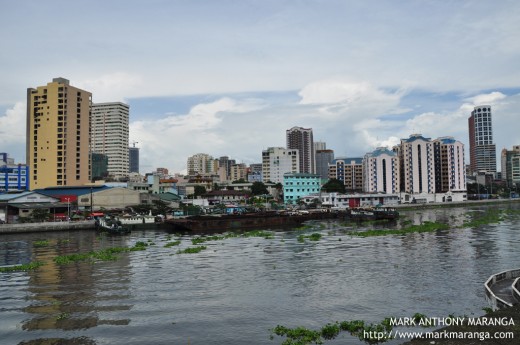
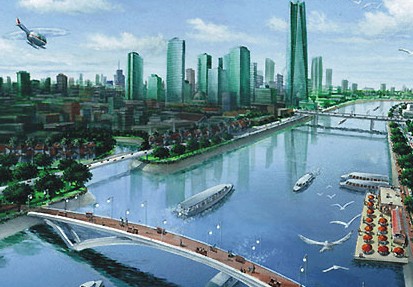
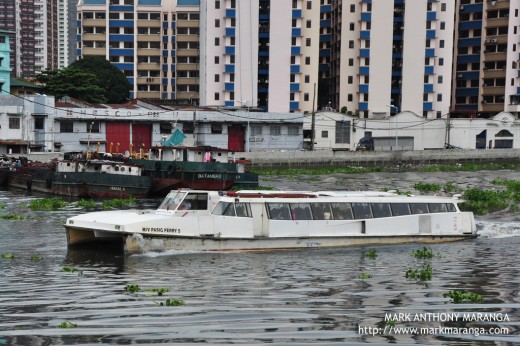
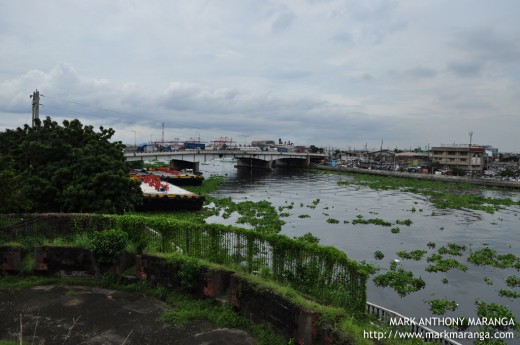
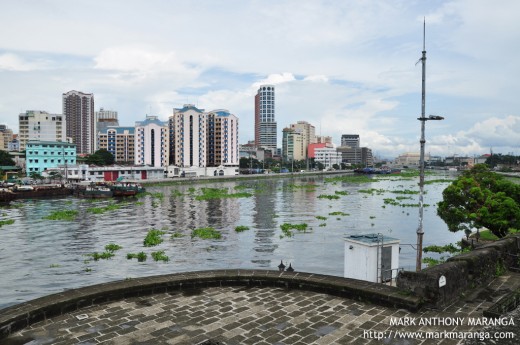
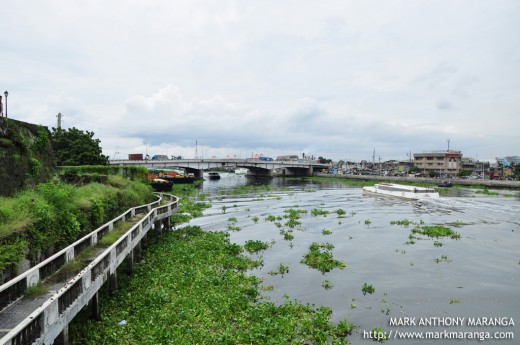
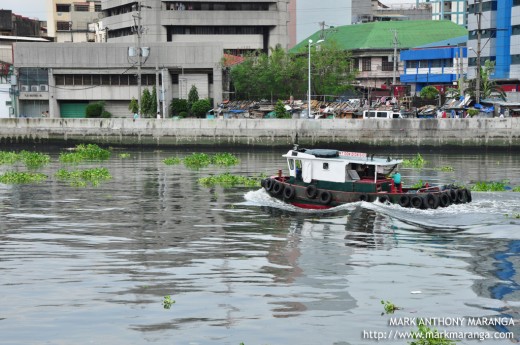
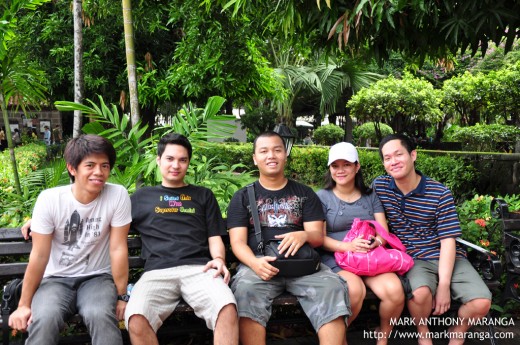












Am doing some research on water and urban programs– and I came across you r article. I hope I can cite this as part of the literature review and I hope I can use soe of the photos you took. You will be acknowledged as the source of the photos.
Thanks.
Yolanda
I’m pleased to come across this well-written article about the true condition of our beloved Pasig River. Your information is factual (based on true science and not some fantasy made-up ideas) and brings out the beauty of the River. I’m please it is not “hijacked” by some wacko like Franz B. Boncodin who takes advantage of every press exposure and will not hesitate to put out fake news releases to push his agenda. He’s the guy who tried to sell DENR the idea of lining up the Pasig River with animal-manure-enriched water lilies. His motive is purely financial and has nothing to do with the renewal of the environment. I happy has not weigh in on this. I’m glad I did not see his comments here. Good luck!
the picture of Pasig river in the future is so great! i’m hoping that it would come to reality!
hope to see Pasig River again in it’s old beauty ..